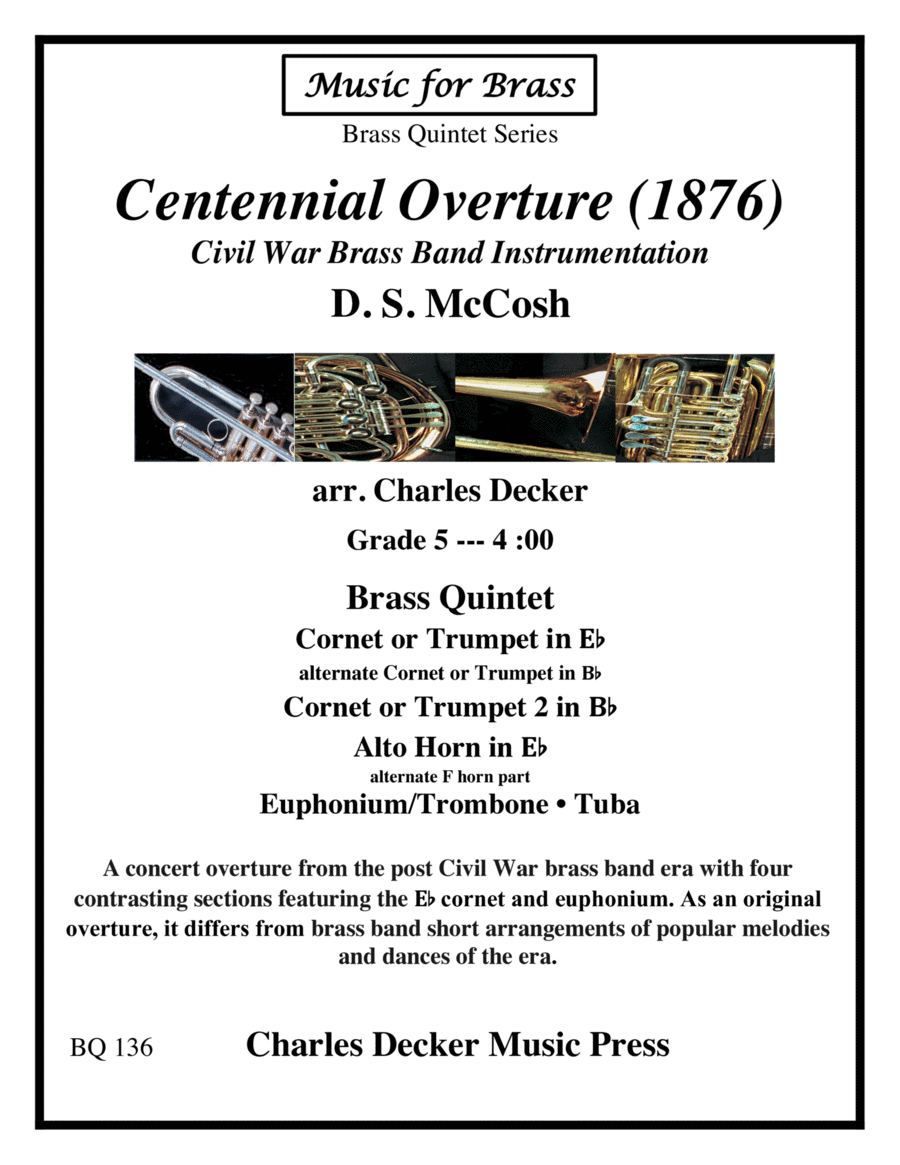Brass Quintet E-Flat Cornet,Euphonium,Horn,Trombone,Trumpet,Tuba - Level 4 - Digital Download SKU: A0.817124 Composed by D. S. McCosh. Arranged by Charles Decker. 19th Century,Chamber,Historic,Patriotic,Romantic Period. 33 pages. Charles Decker Music Press #3546515. Published by Charles Decker Music Press (A0.817124). This original overture from the post Civil War brass band era adds to Americana programming with an exciting musical alternative to the popular melody and dance arrangements played by the all-brass bands of the mid and late 19th century. This centennial musical celebration from 1876 is scored for traditional brass band instruments (E-flat and B-flat cornets, E-flat alto horn, baritone, tuba) but includes alternate parts B-flat cornet/trumpet for E-flat cornet and F horn for E-flat alto horn. The audio file is an actual brass quintet performance of the entire work and not a computer playback of the score. See more than 70 mixed brass ensemble publications at Charles Decker Music Press at Sheet Music Plus for inexperienced to advanced musicians with music ranging from the Renaissance to contemporary new works for trios, quartets, quintets, brass choir and brass band. Many of the mixed brass ensemble editions include alternate and substitute parts being alternate C trumpet parts for B-flat trumpet parts, flugelhorn/trumpet substitute for horn, horn substitute for trombone and treble clef euphonium substitute for trombone. See also 50+ homogeneous brass group editions at Charles Decker Music Press for horn, trumpet and trombone ensembles. Check out the Music of Black Composers Series at Charles Decker Music Press with 25 arrangements for mixed brass ensembles ranging from early jazz to symphonic works with composers Samuel Coleridge-Taylor, R. Nathaniel Dett, William Grant Still, Will Marion Cook, James Reese Europe, James Johnson and others.  All ensemble publications include recordings of the entire edition.  For more of my brass quintet editions use these links to Kendor Music and Cherry Classics Music to see listings of my arrangements of music by J.S. Bach, H.L. Clarke, Debussy, Dukas, Elgar, Falla, Holst, Ives, Nestico, Rachmaninoff, Satie, and Tchaikovsky.
